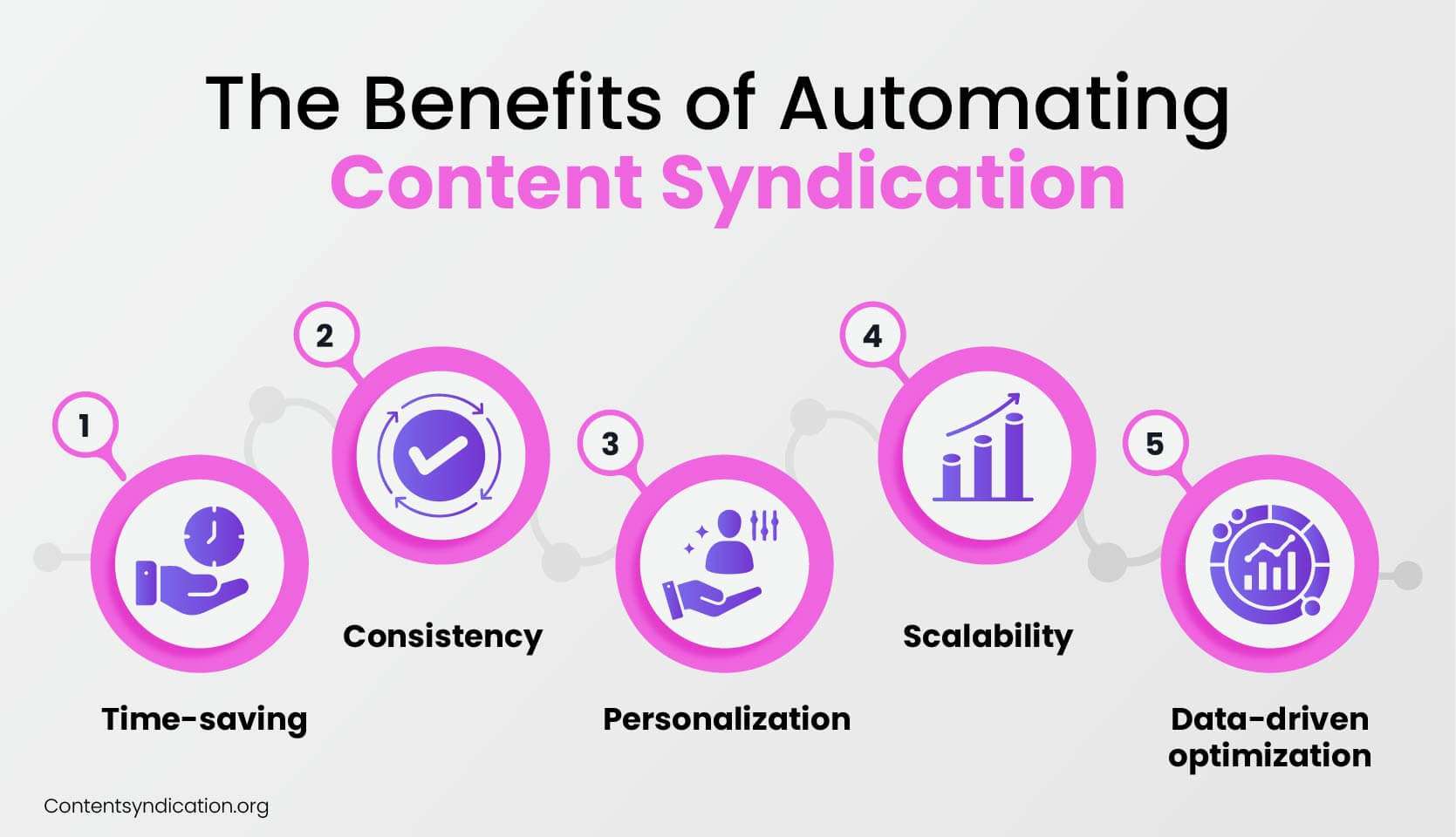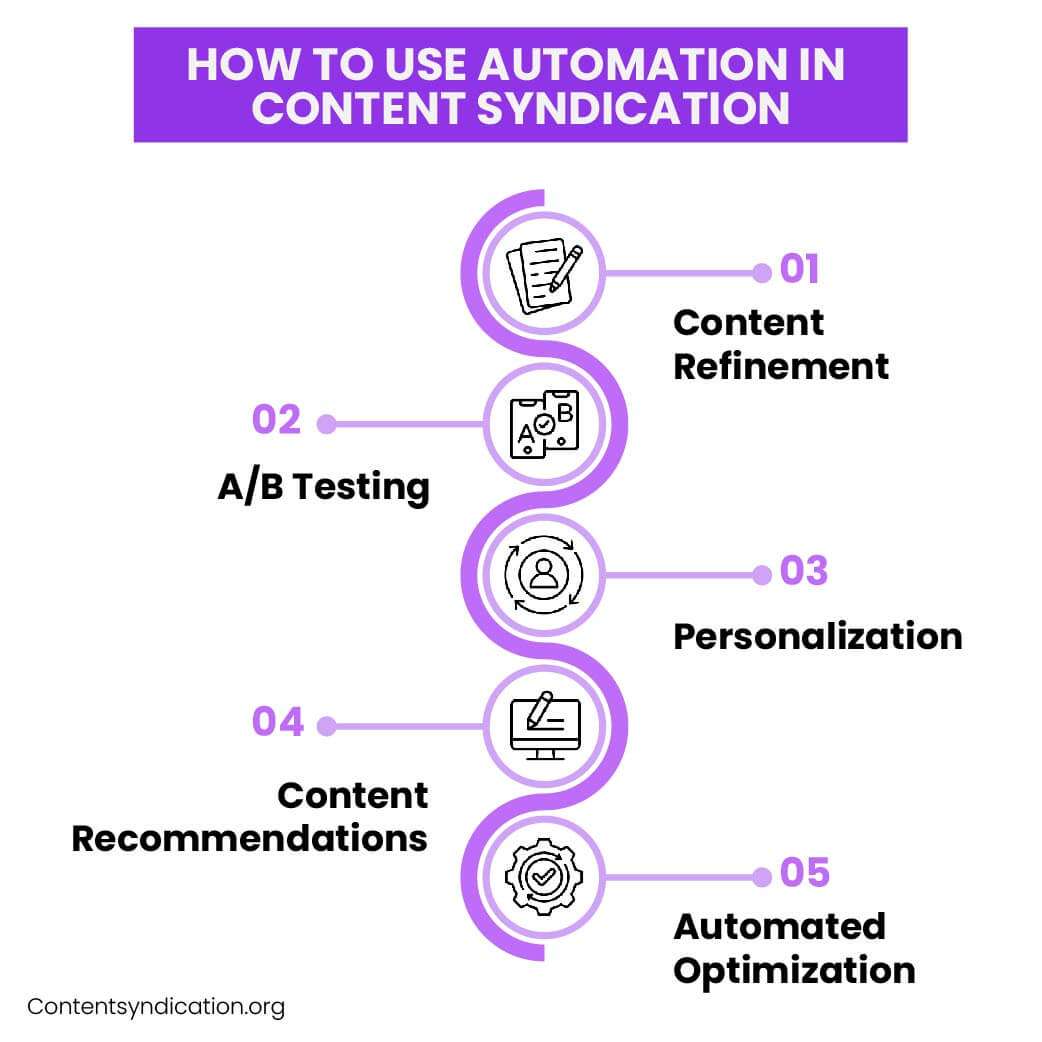It’s the age of automation, and marketers must keep up.
It’s the age of automation, and automatic content syndication is no longer optional for B2B marketers who want to stay ahead.By the end of this year, most businesses still relying on manual content distribution will make the switch to automation — and those who don’t risk falling behind.
If you can cut through the noise, automation in content syndication can transform how you operate: reaching the right audience faster, validating leads in real time, and scaling campaigns without sacrificing quality.
In fact, it’s predicted that by the end of the year, businesses not yet leveraging automation for content distribution will be hopping on board.
If you can push past the overwhelming amount of content out there, you’ll quickly see that automation in content syndication is revolutionizing the way B2B marketers operate.
As we move forward, automation will become the new standard for optimizing B2B marketing strategies. It works hand-in-hand with content syndication. Syndication amplifies how businesses reach their audiences, while automation optimizes how we get there.
Before we dive into automation, let’s quickly define content syndication.
What is Content Syndication?
Content syndication involves distributing your content—blog posts, whitepapers, and eBooks—across third-party platforms to extend visibility and generate high-quality leads. On the surface, this sounds simple, but managing this process manually can be overwhelming.
This is where automation steps in. Imagine a tool that automates the entire process for you. Your high-quality content gets published across the top platforms with little effort on your part — saving your time and efforts while optimizing your reach.
However, automation doesn’t mean you can “set it and forget it.” It requires careful monitoring and optimization to deliver effective results.
Again, many marketers worry that automation will make their efforts feel robotic or disconnected from their audience. The truth is, when done right, automation can actually enhance personalization.
AI-driven platforms give you the ability to tailor content distribution based on individual user behavior, ultimately delivering more human, personalized experiences at scale.
The key is to view automation as a tool that works alongside human oversight, ensuring that the personal touch is not lost but rather magnified.
Must Read: How to Leverage Content Syndication in Lead Nurturing

Why Automation is Key for Your Content Syndication Efforts
1. Saves Time and Resources
Manually uploading content to multiple platforms is tedious and repetitive. Automation takes this off your hands, allowing your team to focus on more strategic initiatives like content creation and campaign optimization.
Yet, while automation handles routine tasks, human insight remains crucial. Automation should help you work smarter, not harder. In fact, businesses that adopt automation tools for lead management report a 451% increase in qualified leads and a 30% reduction in manual work (Gartner).
So, make sure to regularly audit your processes to ensure your automation tools are functioning as expected and delivering value.
2. Enhances Precision and Targeting
That said automation lacks personalization. In reality, tools like HubSpot and Marketo make it easier than ever to deliver highly personalized content — based on user behavior and demographics.
For instance, 77% of marketers using AI-driven targeting report significant improvements in conversions (HubSpot, 2023). Automation supports this by analyzing vast amounts of data and refining your targeting strategy — all while maintaining a human touch.
3. Delivers Consistency and Scalability Across Channels
Scaling content across multiple platforms can help expand reach, but it can also lead to inconsistencies in messaging. Automation solves this problem by ensuring that your messaging remains consistent as you scale your efforts.
However, keep in mind that automated syndication must stay relevant. Regular audits of your content library are necessary, because outdated material might harm your brand’s engagement.
According to Salesforce 67% of marketing leaders are increasing their spending on automation to improve scalability.
The combination of right-time, right-place content distribution, and automation — means scaling doesn’t come at the expense of quality.
4. Real-Time Performance Tracking and Optimization
Automation doesn’t equate to autopilot. Real-time analytics provided by automation tools allow marketers to optimize their strategies continuously. Still translating data into actionable insights is still a critical challenge.
To stay ahead, regularly review performance metrics and adjust campaigns accordingly. This also means your content remains relevant and effective, driving better results. Companies using automated content syndication tools report a 45% faster sales cycle due to improved targeting and optimization (Forrester, 2023).
5. Lead Nurturing and CRM Integration
When automated content syndication is integrated with Customer Relationship Management (CRM) systems, it supercharges your lead nurturing capabilities.
There’s a common fear that automation results in a loss of control over lead management—but this couldn’t be further from the truth.
Remember, automation isn’t a substitute for personalized follow-ups—it enhances them. Let automation manage routine interactions while your sales team handles high-touch engagements with leads further down the funnel.
6. Personalization at Scale with AI
Sure, automation scales personalization, but that doesn’t mean it diminishes it. In fact, AI-driven content syndication enables marketers to deliver highly tailored experiences based on individual behaviors — making each interaction more meaningful. Using AI for content syndication not only ensures scalability but also enhances the precision of delivering personalized messages.
Personalization can backfire if it feels forced or robotic.
Using AI to analyze data in real time. It allows you to adjust content delivery for each individual prospect, creating a seamless, personalized experience.
According to the Demand Gen Report, 93% of B2B buyers prefer personalized content, and 73% are more likely to make a purchase based on personalized recommendations.
With automation, you’re not just engaging more leads—you’re engaging them with the right content at the right time.

Best Practices for Automating Content Syndication
1. Choose the Right Automation Platforms
Not all automation platforms are created equally. Choose one that integrates with your CRM system and offers advanced analytics for performance tracking.
2. Segment Your Audience
Segmentation is essential for effective marketing. Automation tools allow you to segment your audience based on behavior, demographics, and engagement levels. This precision drives better results—personalized content based on segmentation yields six times higher transaction rates (Invesp).
3. Monitor and Optimize Regularly
B2B marketing is dynamic. A static strategy won’t cut it. Continuously monitor your campaigns and optimize them based on real-time data.
According to the Content Marketing Institute, companies that frequently optimize their automation strategies report a 32% increase in revenue.
Conclusion: The Future of Automation in Content Syndication
Content syndication is evolving rapidly, and businesses that embrace automation will be the ones to lead the charge. With AI becoming increasingly sophisticated, content distribution is no longer just about volume—it’s about delivering the right message to the right audience, at the right time.
From hyper-personalization and real-time optimization to predictive syndication and cross-platform storytelling, Automation is revolutionizing how we approach content syndication. Those who adapt will reap the rewards, driving meaningful results and taking their B2B marketing efforts to the next level.
Frequently Asked Questions (FAQ)
Why should I automate my content syndication?
Automation saves time, ensures consistent messaging, enhances targeting, and scales distribution. Marketers using automation report up to 451% more qualified leads and 30% less manual effort, making it a game-changer for modern lead generation.
Will automation make my marketing feel robotic?
Not if done right. Automation enhances personalization by using AI to deliver tailored content based on behavior, demographics, and engagement—making interactions feel more human, not less.
How does AI improve content syndication?
AI analyzes real-time data to deliver personalized content at scale. It helps predict the best platforms, timing, and messaging to engage specific audience segments—boosting conversions and nurturing leads more effectively.
What are the best tools for automating content syndication?
Top tools include HubSpot, Marketo, Outbrain, Taboola, and OnlyB2B’s proprietary syndication platform. Choose a tool that integrates with your CRM, supports analytics, and enables behavioral targeting.
Can automation work with my CRM system?
Absolutely. Automation platforms often sync with CRMs like Salesforce, HubSpot, or Zoho to streamline lead tracking, scoring, and nurturing—enhancing follow-ups without manual data entry.
How do I measure the success of automated syndication?
Track KPIs like lead quality, conversion rate, content engagement, channel performance, and sales cycle length. Use real-time dashboards from automation platforms for continuous optimization.
Is automated content syndication scalable?
Yes, automation enables seamless scaling across multiple platforms while maintaining consistent messaging. It supports campaigns of any size without overwhelming your team.
What are common mistakes in automating content syndication?
- “Set it and forget it” mindset
- Using outdated content
- Ignoring performance metrics
- Over-personalization that feels forced
Regular monitoring and human oversight are essential.
Does content automation really impact revenue?
Yes. Businesses that regularly optimize automation strategies see up to 32% higher revenue (Content Marketing Institute). It helps accelerate the sales cycle and drive higher ROI.




